Tibetan Art
A Unique Look at Alchi Monastery: Treasure of the Himalayas

Alchi: Treasure of the Himalayas © Peter van Ham 2019 / Hirmer.
Considered one of the best preserved Buddhist monastery and temple complex in the Himalayas, Alchi Dukhan lies at 3,500 metres in Ladakh, India.
The monastery is symbol of the spiritual heritage of Kashmir and Western Tibet with thousands of rare and outstanding paintings, murals and sculptures dating back to 11th century.
Only recently His Holiness the Dalai Lama authorized the publication of the artworks inside the majestic temple.
Working in extremely challenging conditions, particularly in the narrow, almost unreachable second and third stories of the Sumtsek, the photographer Peter van Ham collected images of these time-less masterpieces in a memorable book – Alchi: Treasure of the Himalayas.
Pages of the book Alchi: Treasures of the Himalaya by Peter van Ham and Amy Heller.
This unique photographic book, written in collaboration with Tibetan scholar Amy Heller, contains also a foreword by the Dalai Lama.
Following some of the images that have been released for the pleasure of the eyes of passionate admirers of Tibetan culture and art.
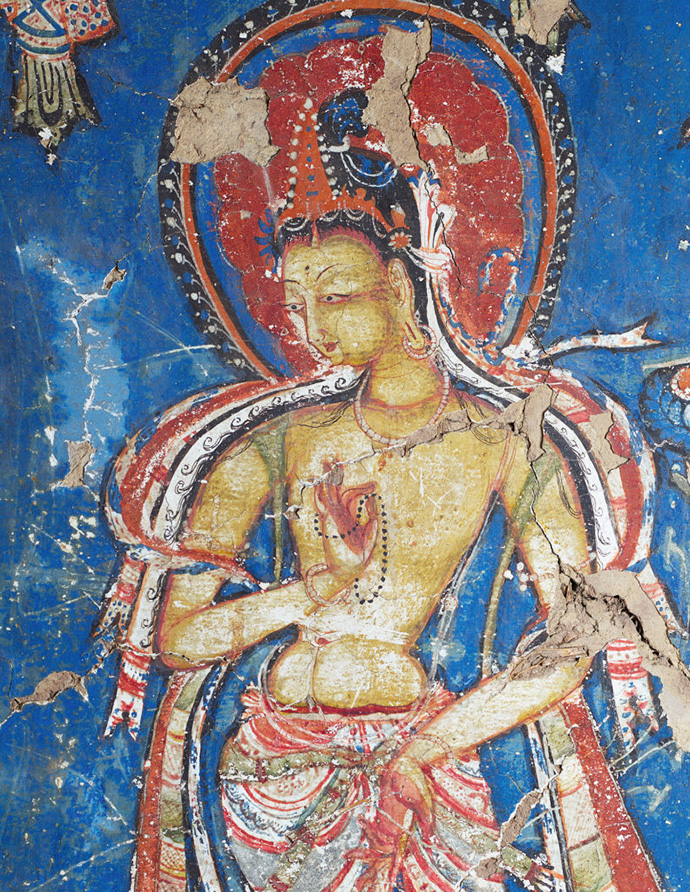
A rare depiction of Buddha Maitreya.
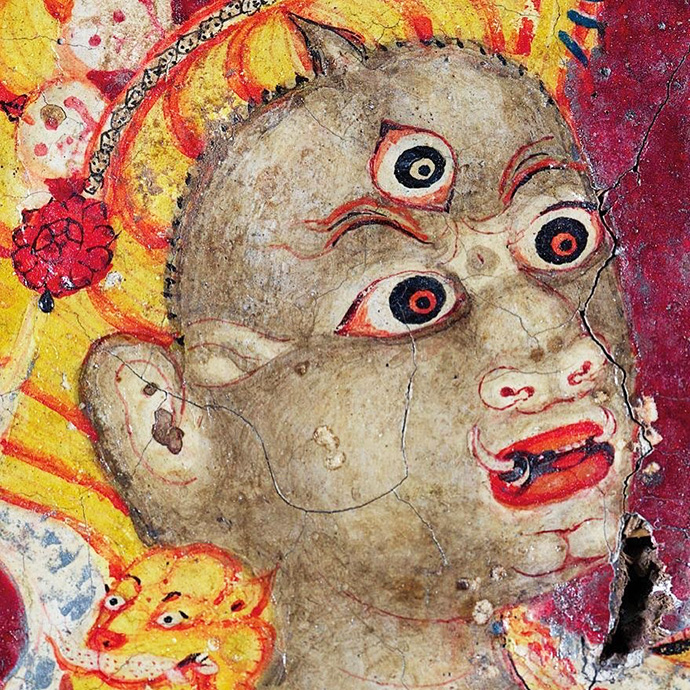
Beautiful Dharmapala protector of Alchi monastery.
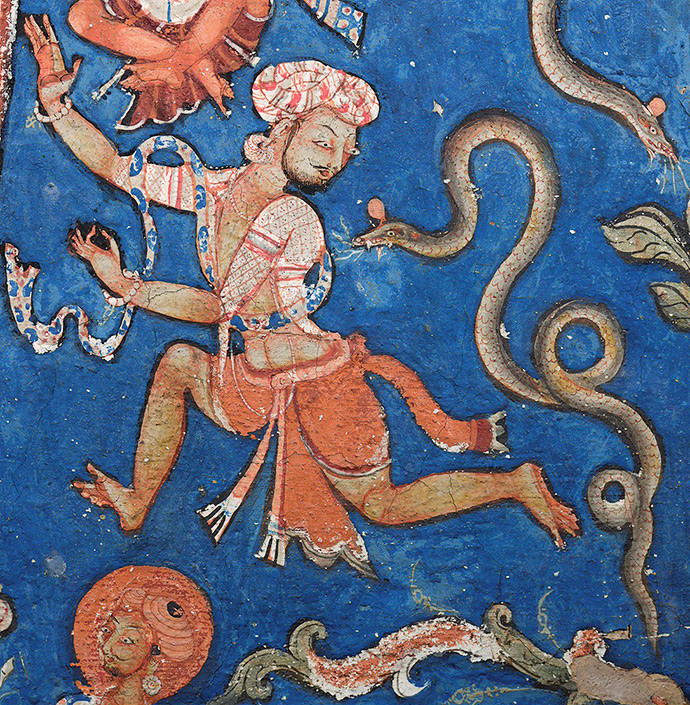
Representation of the perils from which Goddess Tara saves and protects – Alchi’s Sumtsek panel painting.
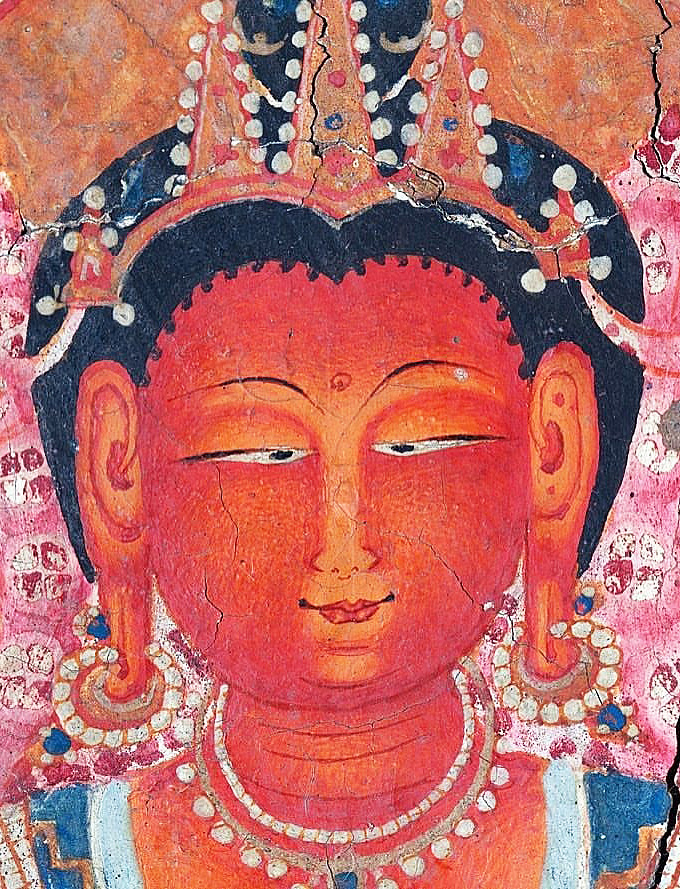
Painting of Buddha Amitayus at Alchi temple complex.
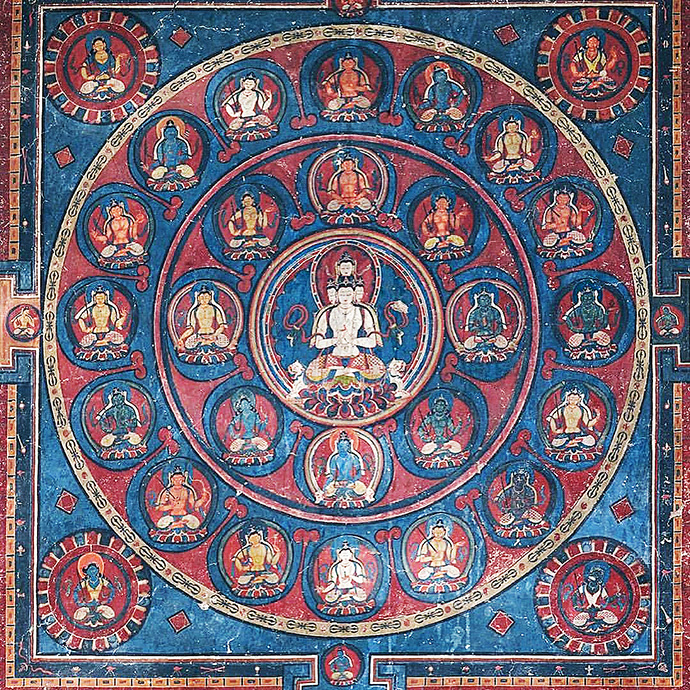
Beautiful 11th century mandala. We increased the brightness of the photo to admire the beautiful details.
“One of the finest art books ever produced.” – David Shulman New York Review Daily.
Click on the book cover to purchase this amazing book.
Namaste.
Murals of Tibet: Buddhist Art Revealed For The First Time
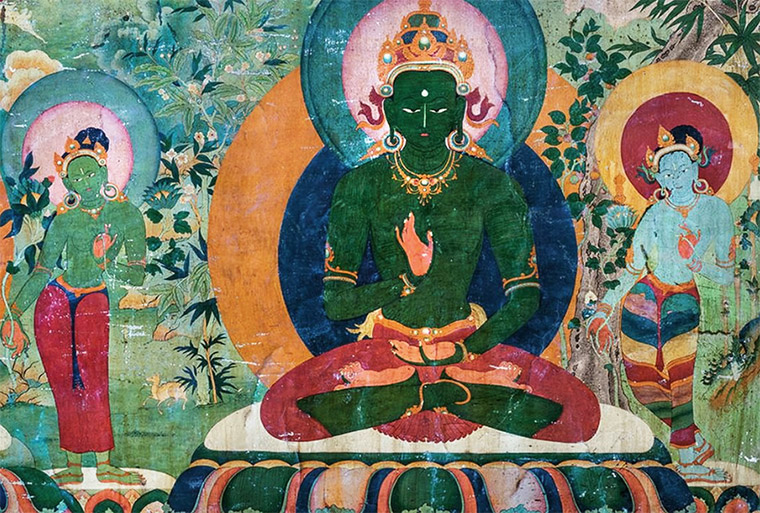
Recently Taschen published an outstanding book called Murals of Tibet , featuring the work of photographer Thomas Laird.
The book assembles amazing photos of murals preserved in monasteries and temples in Tibet taken by Laird in 10 years.
Thanks to a sophisticated photographic technique, it was possible to capture the complete murals with copious details of these precious and extraordinary masterpieces.
This collection is the world’s first archive of murals of Tibet illustrated in life-size resolution.
We were overwhelmed by the beauty of these amazing Buddhist artworks and wanted to share with you some of the photos that have been released.
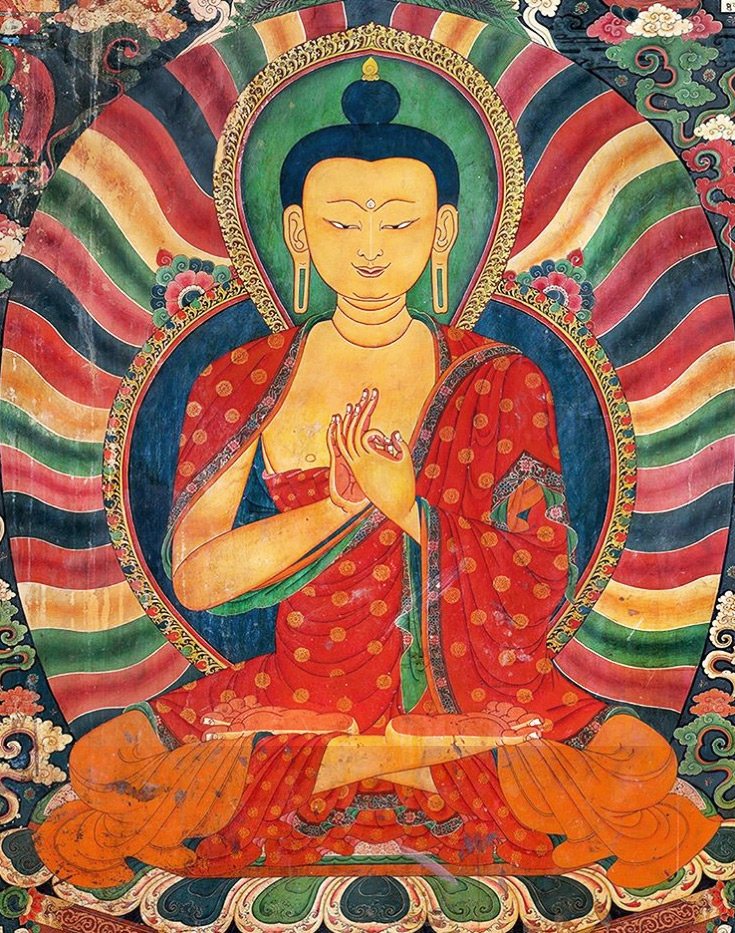
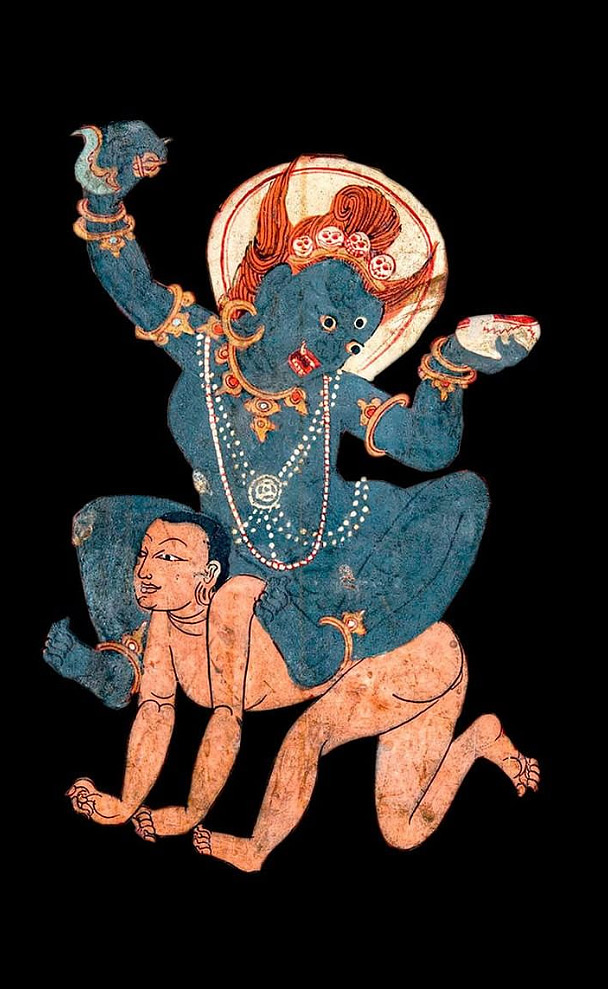
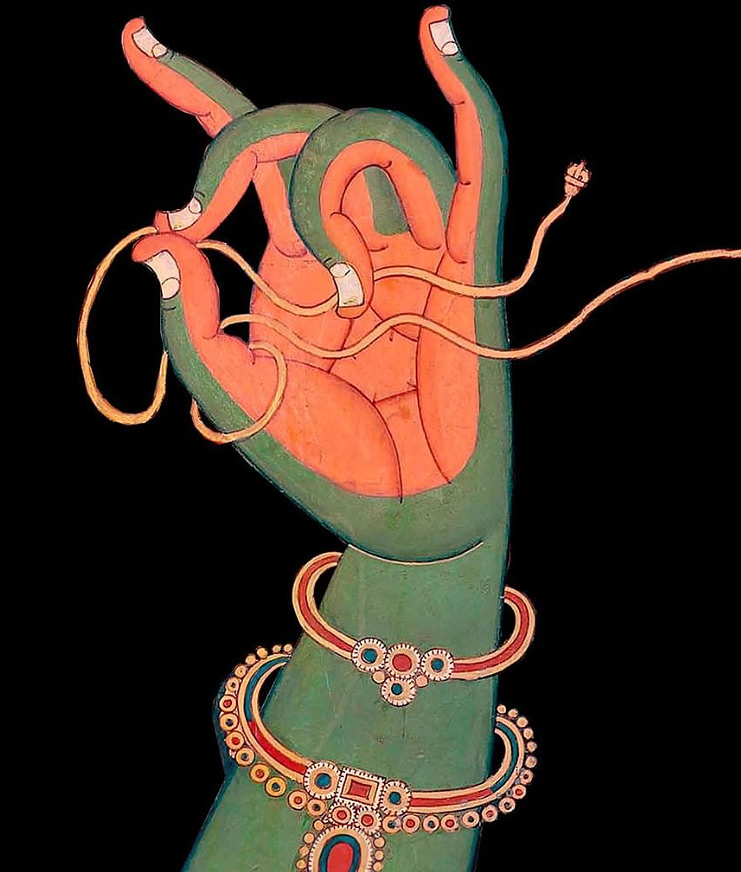
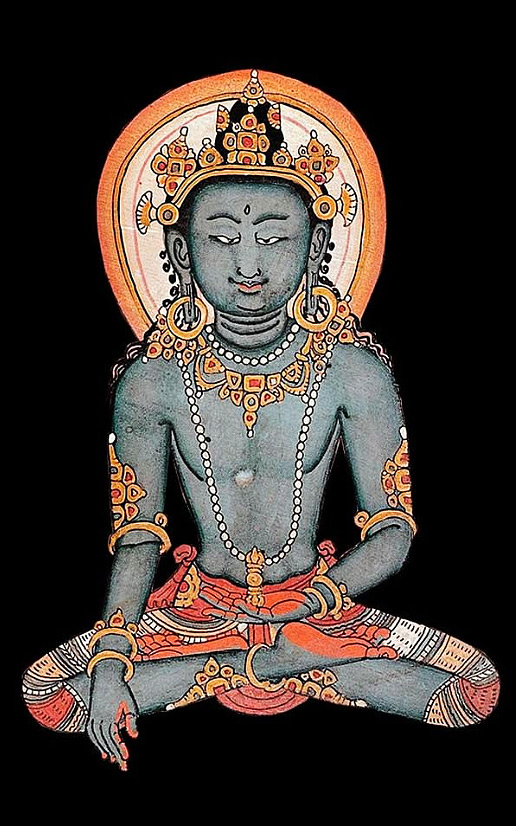
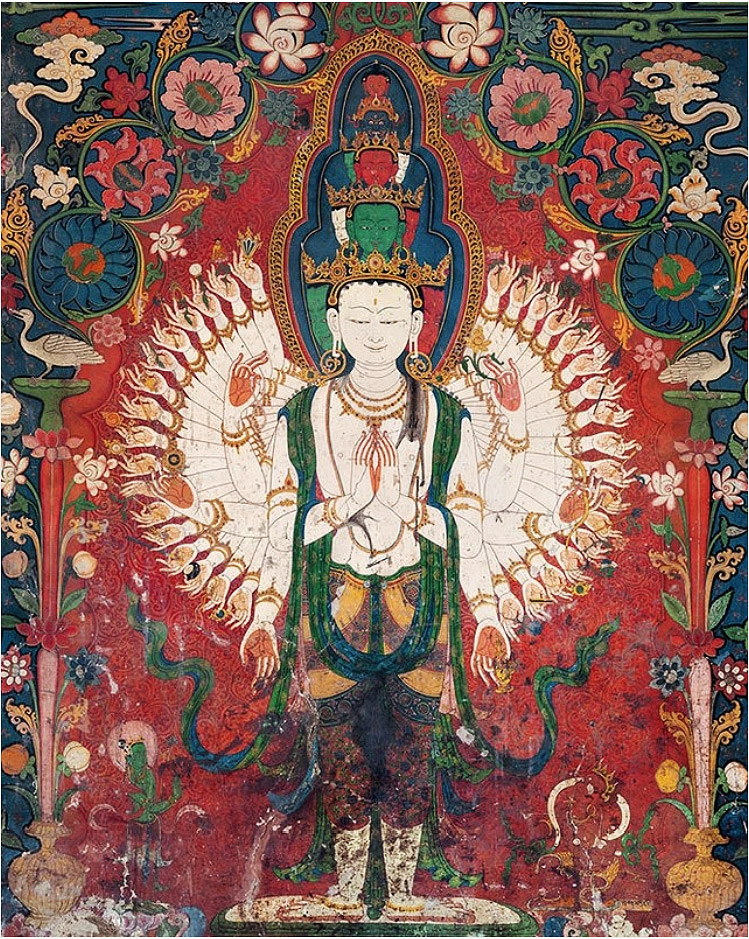
Murals of Tibet is quite expensive but, if you have the resources, you can find it at Taschen.com. Click on the book cover to read more or to order the book.
Namaste.
Happiness is an Art

Akasagarbha: The Bodhisattva of Infinite Happiness
“Whether this moment is happy or not depends on you. It’s you that makes the moment happy. It’s not the moment that makes you happy.
With mindfulness, concentration and insight, any moment can become a happy moment.
Happiness is an art.”
Thich Nhat Hanh

Follow traditionalartofnepal.com on WordPress.com
The Fascinating History of Himalayan Masks
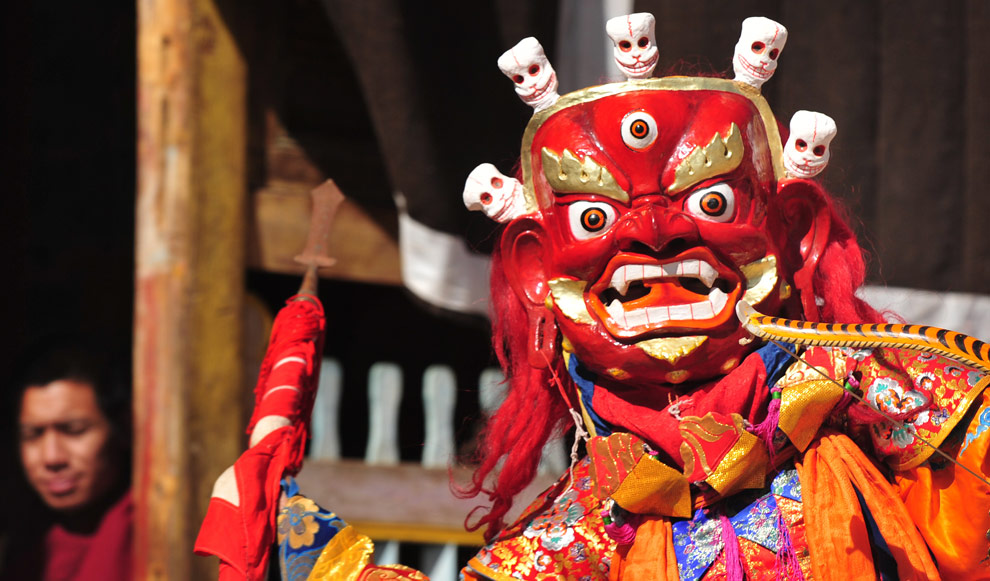
The Origin of Himalayan Masks Cult
Nepalese and Tibetan Masks are one of the symbols that better represent the culture and traditions of people living in the Himalayan region.
The ritual of wearing masks is very old and it comes from animists Himalayan tribes used to worship spirits of nature and guardians of these majestic mountains.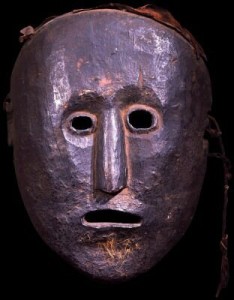
The Shamans of these tribes used to wear masks during rituals they use to perform in order to protect the village, heal diseases, practice exorcisms or other purposes.
Masks supposedly had a very important functions in the social life of these community as they were used also during theatrical representations and ceremonies dedicated to ancestors.
Hindu and Buddhist cultures, that became dominant in the surrounding regions, slowly replaced the myths of this shamanic cult.
However some of the old costumes survived.
Even spirits and demons were adopted by the Buddhist tradition and some of them became wrathful protectors of the Buddhist doctrine.
Padmasambhava and the Rise of Buddhism
Buddhism entered Tibet in the 7th century AD. According to Buddhist mythology the main actor of the transformation of Tibet was Padmasambhava. A famous Tantric Buddhist master from the Swat Valley (today Pakistan) and founder of the first Tibetan Buddhist monastery at Samye, south central Tibet.
Padmasambhava was called by the first Emperor of Tibet to defeat the ancient mountain gods of the old animist cult.
In accordance with the Tantric principle of redirecting negative forces toward spiritual awakening, Padmasambhava converted the wrathful deities, convincing them to become defenders of the new faith.
He is also said to have introduced at Samye Temple the so called Vajra Dance. A dance that takes place in a monastery where masked monks in deep meditation perform rituals that last for three days.
This practice continues today under the name “Cham” and it celebrate Padmasambhava’s conquest over the indigenous cult and their deities.
In Nepal this dance tradition takes a form known as Mani Rimdu: spectacular and colorful masked dances performed during different religious festival.
Iconography of Tibetan Masks
Considering the polytheist nature of both Hindu and Buddhist traditions the deities represented by Tibetan masks are numerous: Shiva, Bhairava, Ganesh, Mahakala, Garuda and Varahi are the most famous.
Some of the deities are depicted using animals like the Lion associated with Sima or the Tiger symbolizing Duma.
However the images must follow the rules and prescriptions described in old manuals and iconographic books.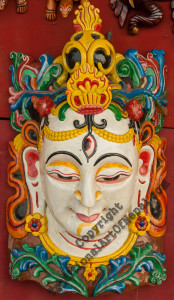
There are several books that set those guidelines, one of the earliest is from the first half of the 15th century. All the masks display a common element: the open third eye mark on the forehead.
The style of Tibetan and Nepalese Masks is characterized by elaborate pointed crowns with skulls, various head-bands, earrings and many other colorful elements.
These decorations not only reflect religious and symbolic aspects but also add a powerful imagery and a peculiar and fascinating look.

Follow traditionalartofnepal.com on WordPress.com
How To Order
- Browse our catalog and choose your favorite design.
- Select your preferred size and quality to check the price.
- Click on “Product Inquiry” to send us a message and we will check if we the artwork is immediately available. If not we will make it for you.
- Use the cart page to calculate the shipping cost by selecting your country.
- Once we receive your order we will start creating the artwork according to your preferences and provide you with updates and images upon your request.
We strive to ensure a smooth shopping experience with our assistance. We also welcome commissions of custom designs of thangkas, masks and mandalas.
Shipping and Payments
We offer trusted shipping options to ensure your purchases arrive in perfect condition, and delivered in 5 to 10 working days worldwide. We accept PayPal, debit/credit cards and bank wire transfer services.
About Our Community
We live in Changunarayan, a UNESCO heritage site located on a forested hill overlooking Bhaktapur and the Kathmandu valley. You are welcome to visit our art school and meet our community of artists and artisans.
Learn More About Our Thangka School And Workshops
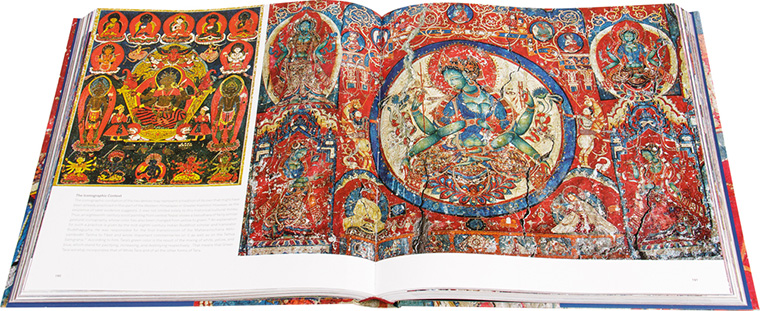
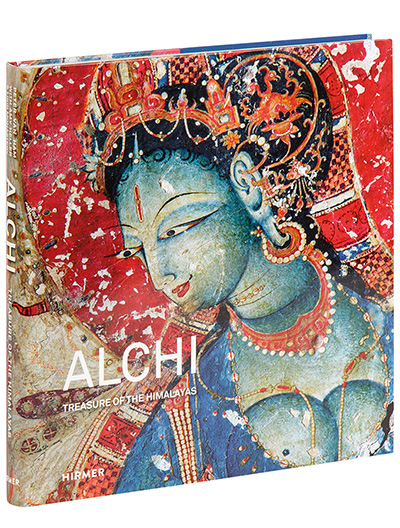
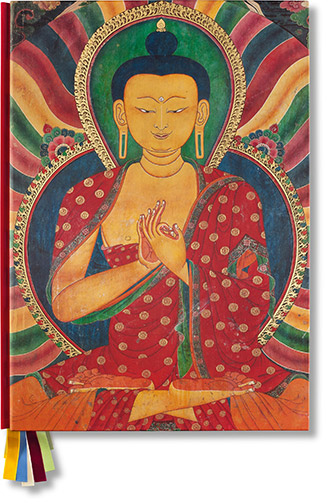


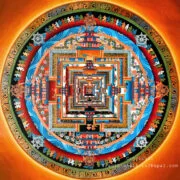 Kalachakra Mandala
Kalachakra Mandala 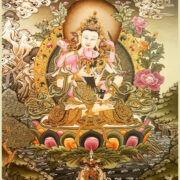 Vajrasattva
Vajrasattva 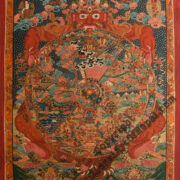 Wheel of Life 2
Wheel of Life 2 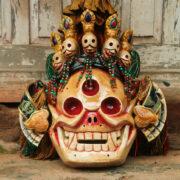 Citipati Mask
Citipati Mask 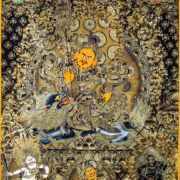 Five Jambhala Thangka
Five Jambhala Thangka 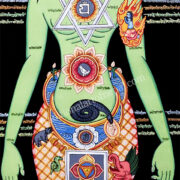 Chakraman Yogi
Chakraman Yogi  Universe Om Mandala
Universe Om Mandala 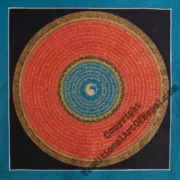 Triple Yin-Yang Mandala
Triple Yin-Yang Mandala 